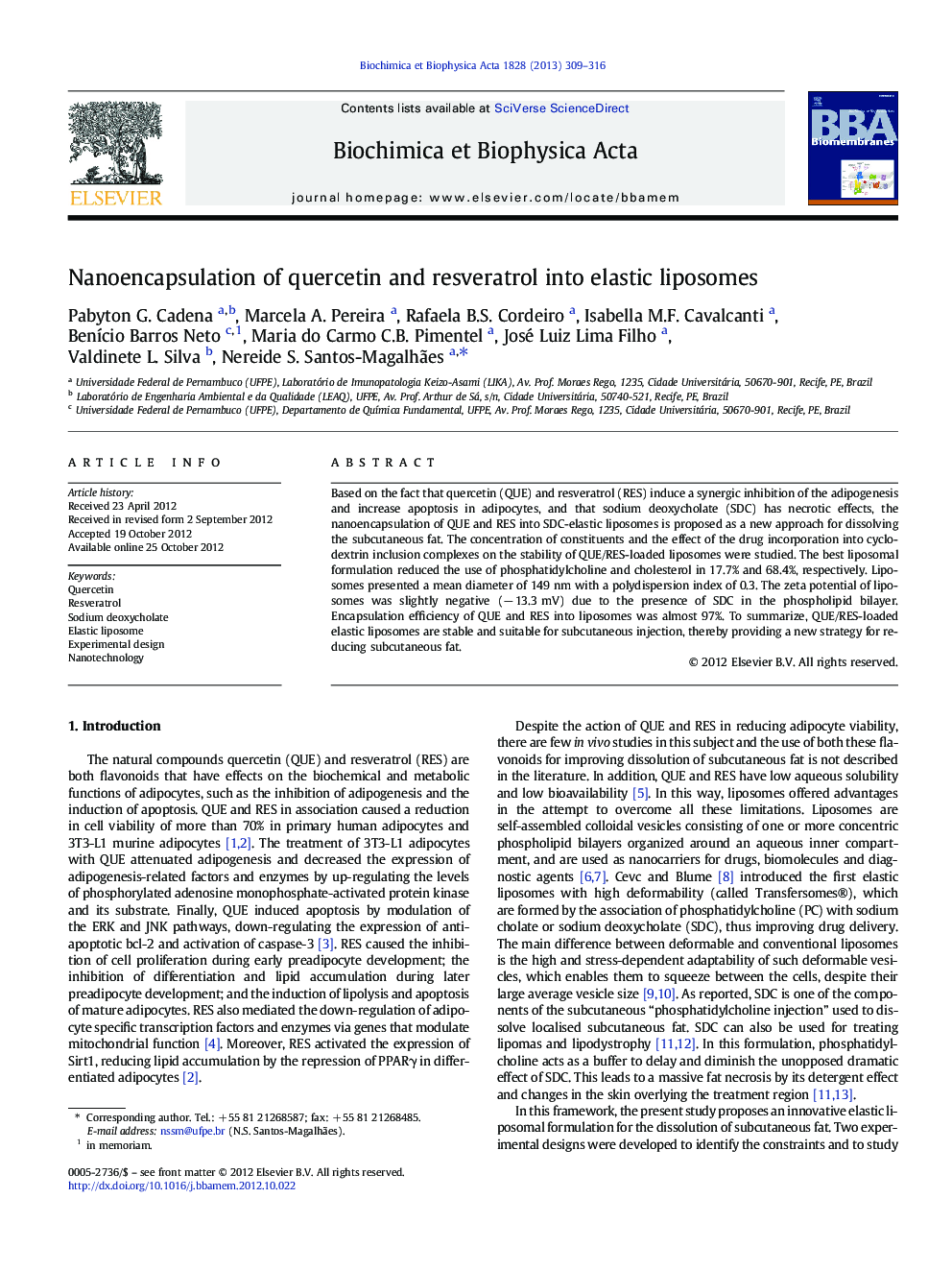| Article ID | Journal | Published Year | Pages | File Type |
|---|---|---|---|---|
| 1944365 | Biochimica et Biophysica Acta (BBA) - Biomembranes | 2013 | 8 Pages |
Based on the fact that quercetin (QUE) and resveratrol (RES) induce a synergic inhibition of the adipogenesis and increase apoptosis in adipocytes, and that sodium deoxycholate (SDC) has necrotic effects, the nanoencapsulation of QUE and RES into SDC-elastic liposomes is proposed as a new approach for dissolving the subcutaneous fat. The concentration of constituents and the effect of the drug incorporation into cyclodextrin inclusion complexes on the stability of QUE/RES-loaded liposomes were studied. The best liposomal formulation reduced the use of phosphatidylcholine and cholesterol in 17.7% and 68.4%, respectively. Liposomes presented a mean diameter of 149 nm with a polydispersion index of 0.3. The zeta potential of liposomes was slightly negative (− 13.3 mV) due to the presence of SDC in the phospholipid bilayer. Encapsulation efficiency of QUE and RES into liposomes was almost 97%. To summarize, QUE/RES-loaded elastic liposomes are stable and suitable for subcutaneous injection, thereby providing a new strategy for reducing subcutaneous fat.
Graphical abstractFigure optionsDownload full-size imageDownload high-quality image (142 K)Download as PowerPoint slideHighlights► Coencapsulated quercetin/resveratrol-loaded elastic liposomes were developed. ► Elastic liposomes are proposed as a new approach for subcutaneous fat dissolution. ► High drug encapsulation efficiency into elastic liposomes was obtained. ► The SEM analysis showed well dispersed vesicles without aggregation. ► Liposomes should be advantageous in the treatment of lipid accumulation diseases.
